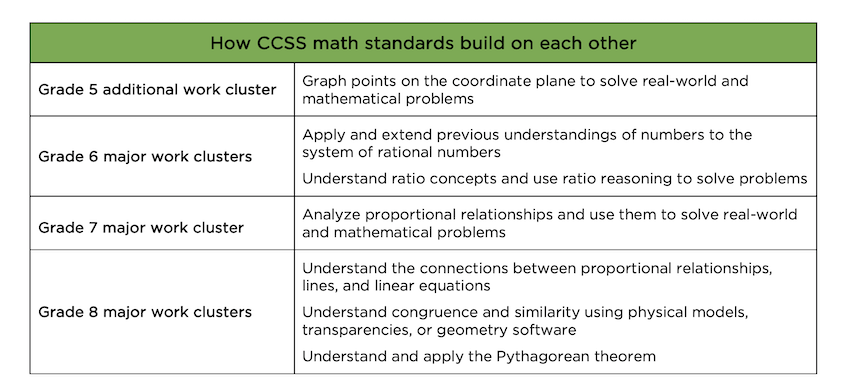 My youngest daughter’s adventures in the kitchen are a source of ongoing humor in our family. Her decision to bake something is often spontaneous and, as a result, she rarely has all the ingredients she needs. Her response when faced with a lack of required supplies is often more creative than logical. She has been known to double up on one seasoning to accommodate for not having another or to ignore the need for things like baking powder because, “The recipe only called for a little, so I didn’t think it was that important.”
My youngest daughter’s adventures in the kitchen are a source of ongoing humor in our family. Her decision to bake something is often spontaneous and, as a result, she rarely has all the ingredients she needs. Her response when faced with a lack of required supplies is often more creative than logical. She has been known to double up on one seasoning to accommodate for not having another or to ignore the need for things like baking powder because, “The recipe only called for a little, so I didn’t think it was that important.”
Although some of my daughter’s creations are delicious, others are flat (literally), tasteless, over-spiced, or just not quite right. Turns out that leaving out key ingredients, even when the required amount is small, or adding too much of another can have a pretty big impact. What is true for my daughter’s cooking is true for many things, including math standards.
Resources can support teachers in planning instruction
As fall approaches, there is much concern over how to account for interrupted learning and learning loss due to COVID-19. With this comes concern that teachers may feel pressured to zero in on “focus skills” or “power standards” and skip standards that seem less important. Even in a more typical year, pressure to target standards that are more likely found on high-stakes assessments can lead to other standards being sped through or ignored.
When it comes to standards, as with recipes, proportions are important. Just as throwing together an equal amount of each ingredient or leaving some ingredients out altogether will not likely yield a tasty cake, giving all standards equal weight or skipping others will result in a disjointed student experience.
[T]he goal of mathematics is not to amass a collection of isolated pieces of understanding, but to cook up a rich, interconnected web of conceptual understanding and skills.
Although the most recent set of reforms produced deeper, more focused standards, districts and teachers still need to know how much time to devote to the various concepts and skills in a particular grade. Essentially, you need a recipe to guide how much of each standard to put into the mix. There are a host of resources that can help you appropriately prioritize standards. Achieve the Core’s focus documents categorize Common Core State Standards (CCSS) for math at each grade as either major, supporting, or additional, for example. Many other standards have similar types of documents. In each case, the intent is that all standards should be taught, but these classifications help allot classroom time appropriately.
When used correctly, resources such as focus documents or the introductory materials for a standard set or grade level can help districts and teachers find the right balance. Well-thought-out documents can act as the recipe to support a deep, comprehensive, and cohesive understanding of mathematics. However, one must be cautious of using the idea of “power standards” to justify skimping on or skipping other standards completely.
Material can’t be skipped
When faced with the task of catching students up on missed learning, it can be tempting to skip standards that are perceived, or sometimes explicitly named, as less important. Doing this risks eroding later mathematical understanding. To use the CCSS as an example, kindergarten and first grade each contain a standard about composing and decomposing shapes. While not major work of those grades, these standards develop the foundational idea that the area and volume of a figure are the sum of their (non-overlapping) parts, which are major understandings of third and fifth grade, respectively.
Frequently, foundational concepts such as the composition and decomposition of shapes are presented in an exploratory way. To offer another example, early fractions concepts are often introduced by having students explore equal shares; multiplication concepts are developed by initially exploring arrays. Because these standards are often standalones within their grade, they may be left off power standards lists. However, racing through or skipping these standards impedes sense making, breaks the coherence of the standards, and reduces math to a series of disconnected skills.
Understanding how everything connects
In addition to focus documents, which can support planning instruction, progressions documents and coherence maps can help you understand how standards relate within and across grades. Remember, as with a recipe, the magic happens not by compiling a collection of isolated ingredients, but in combining them in the right proportion. Simply gathering a bag of flour, a bag of sugar, and a carton of eggs does not give you a cake. Similarly, the goal of mathematics is not to amass a collection of isolated pieces of understanding, but to cook up a rich, interconnected web of conceptual understanding and skills.
Grade-level standards are parts of a whole that interact when combined with each other like the ingredients in a cake. Understanding how your grade-level standards relate to each other and fit within the entire standard set can highlight the foundation laid by certain standards and help determine how to provide the appropriate amount of focus to the most critical standards without sacrificing others. Knowing how the standards relate—how your ingredients influence one another— can help you determine efficient and appropriate ways to support unfinished learning.
The table below shows how Achieve the Core has categorized the fifth-grade CCSS math standards by cluster.
 You’ll notice that the standards about representing and interpreting line plots are not the major work of the grade. They are, however, designed to support and provide application opportunities related to the major work of adding and subtracting fractions with unlike denominators. When considering how to use class time, the work with line plots should be incorporated into the major work with fractions and not taught in isolation.
You’ll notice that the standards about representing and interpreting line plots are not the major work of the grade. They are, however, designed to support and provide application opportunities related to the major work of adding and subtracting fractions with unlike denominators. When considering how to use class time, the work with line plots should be incorporated into the major work with fractions and not taught in isolation.
Similarly, converting measurement units is also not the major work of the grade and is an extension of the work begun in fourth grade. However, adding conversion from a smaller unit to a larger unit to fifth grade allows this work to be incorporated into the major work of place value and computation with whole numbers and decimals. Unit conversions also develop foundational understanding of proportional relationships that will be learned in grades six–eight. Think of these supporting standards as the lemon zest of a recipe: they enhance the flavor of the other standards and add depth to the learning.
While the additional work of the grade may not immediately support the major work, the table below shows how one fifth-grade cluster of additional standards builds key conceptual understanding for later grades. You can see how skipping or skimping on the fifth-grade graphing standards would directly impact significant later work.
 Slow and steady wins the race
Slow and steady wins the race
In thinking about the various progressions within a standard set, be cautious not to overemphasize the end of the progression. The goal is not to race to the end point, such as rushing to fluency in a computation progression. This type of thinking reduces the progression to a single ingredient.
The end of a progression, whether it be application of concepts and understandings in problem solving or the development of procedural fluency, is the result of combining several ingredients that add depth and cohesion to the result. For example, the whole number multiplication progression ends in fifth grade when students are expected to fluently multiply multi-digit numbers using the standard algorithm. Underlying the algorithm are grasping multiplication as equal groups and comparisons, knowledge of basic multiplication facts, and an understanding of place value, arrays, and area models that were developed in previous grades.
Give yourself time to think
As you prepare to head back to school this year, give yourself time to take stock of all the “ingredients” in your standards cupboard. What is the role of each ingredient? Are they the base, like the flour in a recipe? These are the significant works of a grade. Are they a binder, like eggs? Perhaps these are the supporting standards. Are they a smaller ingredient, like the vanilla or the cinnamon? While these ingredients might not be technically required to make the cake, removing them will greatly affect the end result.
Knowing how each ingredient interacts with the other, what their role is in the overall creation, and what proportion is required of each is the difference between creating a delicious treat and eating one of my daughter’s over-spiced muffins. Similarly, understanding the structure and relationship of a standard set, and considering how each standard interacts, introduces, supports, or extends various other standards, is critical in developing a cohesive, connected, and rich understanding of mathematics.
This year, when there may be a stronger push to trim away all but what are deemed the most important, remember—even the smallest dash of spice can enrich the overall dish.